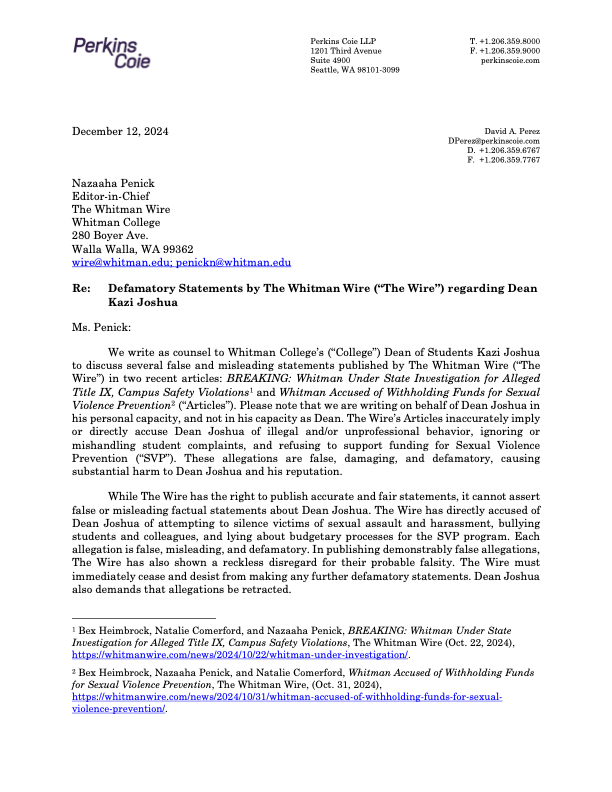
This semester, 142 students have received D-slips, which indicate that a student is achieving a grade of D or lower in a class, a higher than usual number for this point in the year. Rather than signifying greater academic difficulties among students, the increase may represent a new Academic Resource Center strategy to identify and assist struggling students.
“I attribute the change in the pattern from last year to this year to an earlier initial request to faculty to identify students who were already struggling in the fifth week of classes. In the past the initial request for D-slips did not go out until the seventh week,” said Juli Dunn, director of the Academic Resource Center, via e-mail.
No matter when it arrives, finding a deficiency slip in the mail box is an unpleasant surprise.
“I was hoping to get a present from my sorority instead,” said first-year Emma Oschrin, who received a D-slip. Of the ten percent of students who got D-slips last fall semester, about half ended up with a D, F or no credit.
Partway through this semester the registrar began including any notes submitted by the professor regarding the student’s academic status with the D-slip notification sent to a student. Before, the administration had access to these notes detailing how students were doing, but students did not.
“I think [making the notes available to students] will be good down the road because faculty often lay out a fairly detailed road map to getting back on track,” Dunn said via e-mail. “If students don’t seek assistance, at least they have a game plan and know on which assignments or skills they need to focus.”
Forty percent of this year’s D-slip recipients were first-years such as Oschrin, about double the amount of any other single class year received.
Faced with a D-slip in a class she needed for her expected major, Oschrin started to work right away to improve her grade. The ARC set a meeting up for her with a member of the deficiency slip advising team.
“The meeting was basically to tell me to get a tutor, but I’d already done that. Besides the tutor, I went and talked to my professor and he was really helpful. I just kept going in with questions,” she said.
The ARC stresses that its resources, from study skill strategies to one-on-one tutoring, are available to all students, whether or not they receive a D-slip. Dunn noted that students of all years, majors and grade point averages find themselves needing help with a particular class, as demonstrated by the fact that D-slips have come from 19 departments this semester. The center offers assistance to any student who asks. Not everyone does.
“I think for many students, particularly first-year students, this is the first time they have ever had a D or F, let alone struggled: so I think a lot of students are embarrassed that they are in such a predicament,” said Dunn.
Dunn noted that if students do get over the embarrassment and take action, they can improve their grades.
“They need to turn that energy into positive action that will help him or her avoid academic disaster: talk to their professor, their adviser, seek resources, become informed about the ramifications of dropping, P-D-F, or withdrawal. Doing nothing often results in less than optimal outcomes,” she said
Between her professor, tutor and the help of her section, Oschrin got a 98 percent on her last exam.
“If you use the resources out there, they’re very helpful,” she said, while cautioning students against waiting until the last second to work on improving.




